Tweaks for Geeks 2019
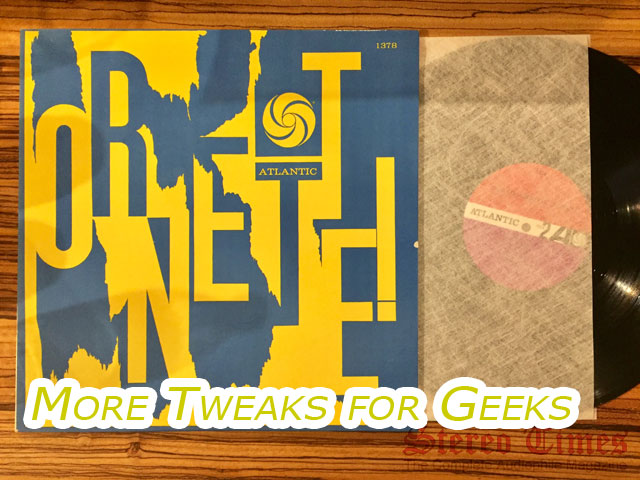
 Caps, Sleeves, Arms, and Soap
Caps, Sleeves, Arms, and Soap
We’re going to talk about some capacitors, record sleeves, vinyl detergent, and another beater Tech-12 in a minute, but first a little audiophile malpractice.
DON’T Try This at Home
I did something really stupid. A couple of months ago my Cary V12r started blowing fuses, which is generally a sign that one of the big power tubes is drawing its last breath. I have a terrible habit of ignoring the clear warning signs, replacing a lot of fuses, and hoping for the best, largely because it’s expensive to replace a dozen matched 6550 valves. Bad tubes always leave me in a state of denial, like a terminal patient who doesn’t want to believe the diagnosis.
This time procrastination ended up costing me dearly. The 3-amp fuse, which usually barely breaks the wire or leaves a very small black spot on the filament to indicate it’s blown, were vaporizing entirely, leaving the inside of the glass tube coated with black soot. Shortly thereafter, the amplifier was completely dead. None of the LEDs on the front would so much as flicker, leaving no option except to ship the amp back to Cary for repairs. The diagnosis: two of the Hexfred diodes in the power supply had fried. Erring on the side of caution, Cary replaced all six.
When the amplifier returned, and I’d reinstalled my tubes, the blowing-fuse issue immediately returned. This time, at Cary’s advice, I finally checked the tubes, which I should have done in the first place. In the absence of a tube-tester, testing bottles is a somewhat primitive process. Years ago, one of Cary’s techs suggested the following procedure: shut the amp completely down, remove all the power tubes, re-install them one at a time in the front left socket, then power the amp back up and see if that particular tube acts properly, flames, or plays dead. Repeat the process for each tube until you find the one behaving badly.
So that’s what I did, and oh boy, did I find it! The fourth tube did absolutely nothing: No glowing filament, no heat, no flame, nothing. I shut the amp down but did not wait for the electricity to dissipate. I grabbed the base of the tube – which should not hold a charge – to pull it out, then inadvertently brushed the triode/ultra-linear switch creating a circuit through my left hand. ZAP!!! Electricity shot up my arm and I was left with a small burn blister on my index finger, entirely unpleasant.
I’m sure Guglielmo Marconi did this kind of shit all the time, but seriously, let the charge drain out of your amp before you pull the tubes and get a pair of gloves or something.
Everything I did in this sequence was entirely wrong (and stupid), from trying to convince myself that the tubes were ok to electrocuting myself. Fortunately, this stunt didn’t cause any additional damage to the amp. With replacement tubes installed, the V12r is running just fine, for which I’m most grateful. Insured round-trip shipping alone for the one hundred and thirty-five-pound wooden crate to North Carolina was over $400, not something I was eager to repeat twice in the same month.
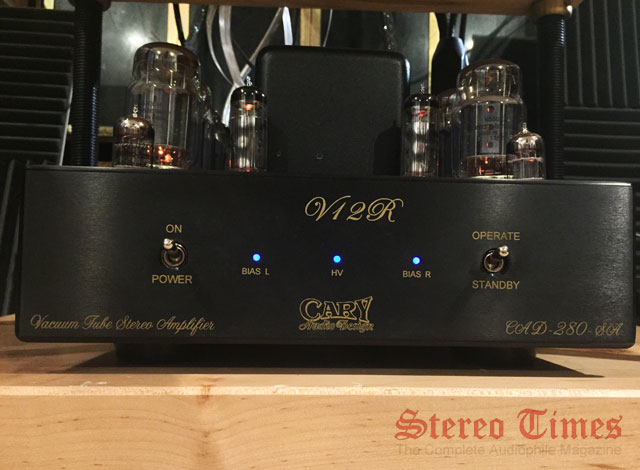
Cary Audio CAD-280SA V12R – Mundorf MCap SUPREME EVO Silver/Gold Capacitor Modification
As I’d already gone to the trouble and expense of shipping the amp to the factory for the repairs, I figured I might as well bring it home with the latest bells and whistles. Cary Audio now offers an upgrade to the Mundorf MCap SUPREME EVO Silver/Gold capacitors, and the tech I was working with was enthusiastic about them. At $360 for the set, they’re not cheap, and I almost certainly would not have done the mod had my amp not already been in North Carolina for repairs, but as long as they had it on the bench it would have been a missed opportunity not to perform the upgrade.
A month later I’ve gotten over the grief of the expense. The new capacitors are terrific. The amplifier is smoother overall, with better resolution and spatial cues, as well as more snap and dynamics – all good things. The soundstage also seems to be a bit larger and the amplifier is quieter, too.
 By far the most pronounced improvement, though, is in the bass, which has never been the V12’s strongest quality. With the new caps there’s significantly more of it, it’s much tighter, it goes deeper, and it exhibits more audibly realistic details than I’ve ever gotten out of this amp. Double basses sound more like wood, and deep notes are more clearly audible, even under tutti passages where they can often be obscured. Contrary to the curse of ill-defined low tones, everything now sounds more like an actual instrument if the recording offers such detail. Finally, listening to the bass now offers more physical impact, the kind that lets you feel it through your limbs, not just your ears. The difference is dramatic. The recent Blue Note/Tone Poet reissue of Cassandra Wilson’s Glamoured, has room-filling mass that brings flesh and blood into the room. With sparse instrumentation, the bass assumes an outsize role in the mix, often performing as melodic counterpoint to Wilson’s smoky alto. The clarity and density of the sound is addictive. I’d been listening to this album heavily before the upgrade and the Mundorf caps made a significant improvement in the sound reproduction.
By far the most pronounced improvement, though, is in the bass, which has never been the V12’s strongest quality. With the new caps there’s significantly more of it, it’s much tighter, it goes deeper, and it exhibits more audibly realistic details than I’ve ever gotten out of this amp. Double basses sound more like wood, and deep notes are more clearly audible, even under tutti passages where they can often be obscured. Contrary to the curse of ill-defined low tones, everything now sounds more like an actual instrument if the recording offers such detail. Finally, listening to the bass now offers more physical impact, the kind that lets you feel it through your limbs, not just your ears. The difference is dramatic. The recent Blue Note/Tone Poet reissue of Cassandra Wilson’s Glamoured, has room-filling mass that brings flesh and blood into the room. With sparse instrumentation, the bass assumes an outsize role in the mix, often performing as melodic counterpoint to Wilson’s smoky alto. The clarity and density of the sound is addictive. I’d been listening to this album heavily before the upgrade and the Mundorf caps made a significant improvement in the sound reproduction.
If you have a Cary V12 power amplifier I’d highly recommend this upgrade (Come to think of it, I’d investigate the Mundorf caps for any of Cary’s amps), but there are some things to weigh. Cary charges $90 each for the caps, and there are four of them. Poking around online, it’s easy to find these caps at multiple electronic supply companies priced from between $35 and $65 each, depending on the size. If you happen to know what you’re doing and are comfortable working with electronics, or have a good local tech that can do the same, I suppose it would be possible to save yourself some money, accomplish the same thing and enjoy the results. Personally, I’m more comfortable having Cary do it. They know the equipment, they’ve vetted the upgrade, and I’d rather not take the risk even with a seasoned tech who’s not familiar with the amplifier if possible.
Also, Cary’s customer service was quite good. I had a lot of back and forth questions with Service Manager Steve Witek, on both the installation of the caps as well as the repairs, and found him to be knowledgeable and responsive. He returned emails in reasonable time and I received updates every time they touched the amp, including opening the boxes to verify that all my tubes had arrived safely. They also sent me the initial inspection results, costs estimate, test results and the like (It bench tested at 130w per channel, 30% more than specified). Everything was clear and they didn’t do any work until I’d approved it, which is often more than you’d get out of your local auto mechanic. Yes, the whole shebang was pricey, especially after you figure in the shipping, but Cary’s service inspired confidence. I’m happy with the results.
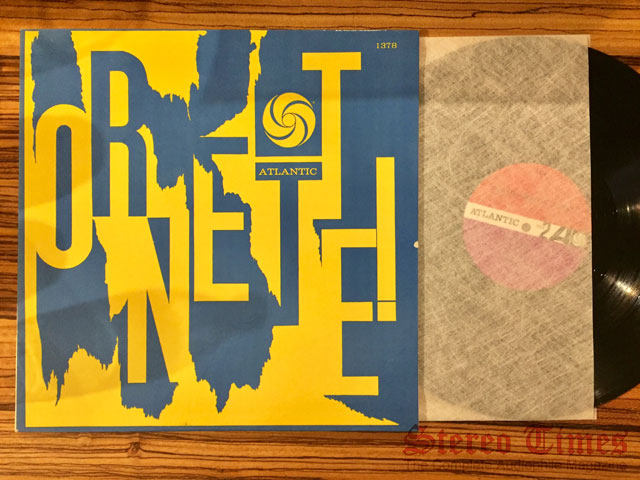
MA Recordings – Micro-Fiber Inner Sleeves for 12” Records
A few years ago, at Capital AudioFest, I happened onto the table of MA Recordings, a small audiophile record label that produces vinyl and CDs of classical, jazz, and other more sophisticated specialty music. Their packaging is beautiful and sonic production values are unusually good. But that’s a story for another day.
For purposes of this column, the item of interest is their sleeves. I’ve never seen such perfect tailoring: beautifully draped and elegant, aligned just so at the base of the thumb, allowing a hint of the shirt cuff to peek…uh…wait, wait… wrong sleeves.
Their record sleeves, that’s what we’re talking about!
 When they started pressing records, MA went looking for a unique, high-quality interior record sleeve to match the rest of their premium packaging. What they settled on was a sleeve made of micro-fiber cloth, valued for its anti-static and dust prevention properties. However, the Japanese firm manufacturing the sleeves required a larger order than was required for a relatively small vinyl production run, so MA did something smart: They had the sleeves made anyway and in addition to putting their own records in them they now sell them to public for $33.00 for a pack of fifty.
When they started pressing records, MA went looking for a unique, high-quality interior record sleeve to match the rest of their premium packaging. What they settled on was a sleeve made of micro-fiber cloth, valued for its anti-static and dust prevention properties. However, the Japanese firm manufacturing the sleeves required a larger order than was required for a relatively small vinyl production run, so MA did something smart: They had the sleeves made anyway and in addition to putting their own records in them they now sell them to public for $33.00 for a pack of fifty.
I bought a pack just to try them out and I’ve gone back for another two or three hundred sleeves since then. They really do eliminate static better than any other vinyl storage accessory I’ve tried, including virtually every other sleeve in my experience and many of the various anti-static record brushes. You know when you pull a record and can hear the static popping as you slide it out of the inner sleeve? I’ve never once had that happen with the MA sleeves. As a result, any dust on the record brushes off with superior ease.
And speaking of dust, the MA product also outperforms other sleeves here as well. I make sure I clean my records well on a VPI 16.5 before they get placed in a new bag, but a certain amount of fine dust is inevitable no matter what. Records coming out of these sleeves have significantly less dust stuck to the playing surface than with a conventional paper, poly-lined, or full poly sleeves. The other thing that’s happening is fine particulates are getting trapped in the micro-fiber, effectively dusting the record every time it’s pulled out of the sleeve, which is handy.
Now, I can hear someone crying that by simply putting the record into or pulling the record out of a sleeve with dust trapped inside the user must be damaging the record, but I don’t think so. First, as already stated, I only place well-cleaned records into these sleeves, so there’s very little dust to begin with. Second, if you think your records aren’t retaining at least a little dust in any other sleeves you’re kidding yourself. The difference is that the MA Recordings sleeves seem to capture that dust and help keep it off the record, and there’s real value in that.
The MA Recordings micro-fiber sleeves are a little more expensive than more traditional designs, but at about 66¢ each they’re hardly prohibitive. They’re available through the MA Recordings website (MArecordings.com). If you value your vinyl these are worth checking out. Unreservedly recommended.
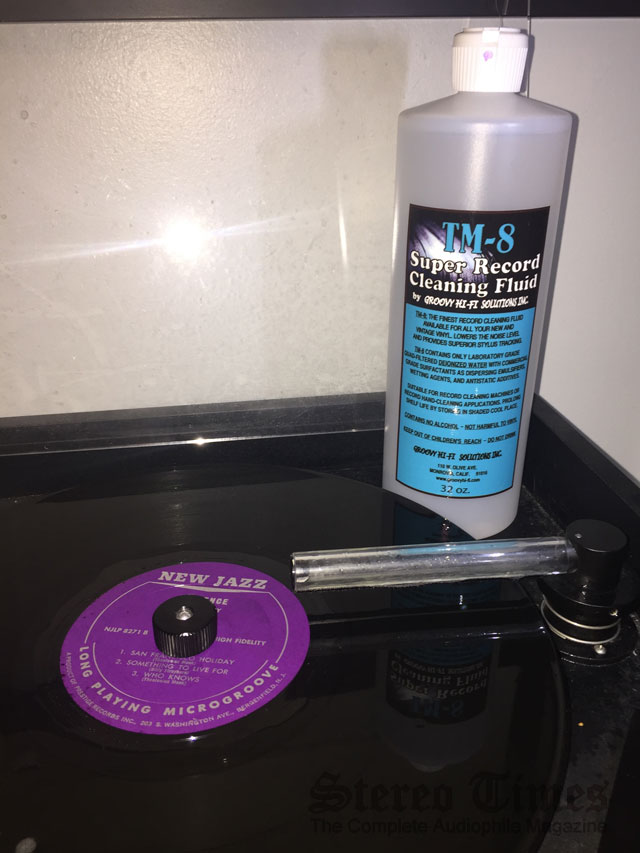
TM8 Record Cleaning Fluid
Over the years my records have been graced with a great many record cleaning solutions, including the Mobile Fidelity three-step system, L’Art du Son, the stuff that came with my VPI 16.5, and a couple of home brewed concoctions based on distilled water, often including Photo-Flo as a surfactant with other secret ingredients. All of them did a pretty good job but never a good enough job for me to say, ‘This is it!’
This year, in search of a better mousetrap, I once again tried something new. After reading a few forums and reviews on various websites I decided to try a new-to-me one-step cleaning fluid called TM-8, which is marketed by Groovy Hi-Fi Solutions, Inc. (www.groovyhi-fi.com) and is available through major online sellers like Acoustic Sounds.
I’ll let you know at the outset that this stuff ain’t cheap. A 32oz. bottle is $70 and a gallon runs $195. And, because it uses laboratory grade water as a base, it also comes full-strength, not as a mix-it-yourself concentrate like L’Art du Son. As a result, be prepared to add some shipping charges into the price. Fortunately, especially considering the higher up-front cost, a bottle of TM-8 goes pretty far. The initial 32 oz. bottle I purchased in March will likely get me to the end of the year.
The product literature – which I’ll paraphrase here for brevity – suggests that the fellow who developed the stuff, rocket engineer Toy Shigekawa, put some real science behind the fluid. The base is laboratory grade deionized water that’s been heavily filtered to eliminate common water-born elements and any remaining particulates. It’s also been irradiated to prevent microbial growth. There are also surfactants and emulsifiers, presumably some type of cleansing agent, but absolutely no alcohol, which is better in your whiskey than it is on your records anyway.
TM-8 is a one-step process. After vacuuming it off the platter surface you’re good to go. No rinsing required. My own system for using the stuff is to spread it generously on a record on the VPI 16.5 record cleaning machine, then turn the motor off, close the lid, and let it soak. Then I’ll go listen to some other record. When that record is over, I’ll vacuum up the fluid, then flip it over and repeat the process on the other side. If the record being cleaned is particularly dirty, or old, or both, a second TM-8 bath is often beneficial.
The good news is that my records are cleaner after soaking under a film of this stuff than they’ve ever been with any of the other products I’ve tried. It does a good – though not perfect – job on tough fingerprint grease (very few products do). Vinyl is also quieter, suggesting the TM-8 really does get down in the groves to remove dirt that may have been lurking in there for decades. On playback, musical details have better clarity. I find myself washing a lot of records that I’d previously cleaned with other products and they sound better for it.
I haven’t tried every vinyl-cleaning product on the market, so I’m not prepared to declare TM-8 the best cleaner out there, but among the ones I have used the TM-8 fluid simply washes records more effectively. In fact, I just ordered another bottle of it. Again, very highly recommended.
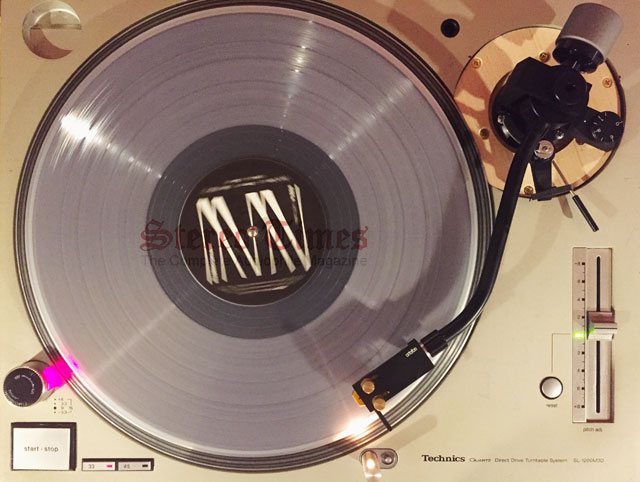
Abby Normal – Another Frankenstein Tech 1200
In the last Tweaks for Geeks column I talked about some work I did on a forty-year-old Technics SL-1200 Mk I. Since then I’ve modified yet another Tech-12, this time a late 90s M3G model with quartz lock. To keep costs down I sacrificed cosmetics but still obtained a functionally solid table. A Craigslist special, this one had clearly suffered a bit of abuse. The exterior aluminum casework has some serious scratches at the front corners, Naphtha was required to get some sticker residue off the top, and the arm was missing the little extra weight that attaches to end of the shaft. However, the primary counterweight was there and the arm-bearings move freely, balancing to neutral easily. Most important, platter speed is dead stable at both 33 and 45 rpm, all testament to the Tech-12s reputation for ruggedness. With the stock arm and an Audio-Technica AT33Sa moving coil cartridge the sound was more than respectable.
Here comes the soapbox.
 The hi-fi community regularly bares its irrational teeth at the older Tech-12s (and sometimes the new ones), panning them as mere “DJ tables”, chiding them for jiggley arms, and especially for a very slight measured speed instability often referred to as ‘cogging’, essentially a torque variation caused by the interaction between the magnets and coil windings inside the motor. Is cogging real? I suppose as a matter of technical measurement. Can you hear it? In most systems, I doubt it.
The hi-fi community regularly bares its irrational teeth at the older Tech-12s (and sometimes the new ones), panning them as mere “DJ tables”, chiding them for jiggley arms, and especially for a very slight measured speed instability often referred to as ‘cogging’, essentially a torque variation caused by the interaction between the magnets and coil windings inside the motor. Is cogging real? I suppose as a matter of technical measurement. Can you hear it? In most systems, I doubt it.
Some of these detractors are obnoxious. Just this week I was involved in an online discussion where some guy was rattling off the Tech-12’s deficiencies, before concluding with “…I was too busy getting my mechanical engineering degree,” as if the degree had magically bestowed this fellow with superior ears. I have nothing against engineers in general, after all, they do design most of our beloved gear, but to this gentleman and his fellow travelers, jeez, don’t be such a pompous dweeb.
I’m of the opinion that most of these complaints are badly overblown. It’s an audio snob article of faith that the 1200 can’t compete with real turntables. I call bullshit on that. I’d be willing to bet that many detractors – including our friend the engineer – have rarely if ever listened to a Tech-12 in the context of a better system, or perhaps they heard a pair in a night club, played way too loud through crappy amplification and now consider the experience as gospel. My Dad had an uncle who owned a Mercedes with a carburetor problem in 1960 that caused it to lock up in bad weather. For fifty years afterwards Dad would tell anyone who listened that you shouldn’t buy a Benz because they didn’t run in the rain. Never mind that car manufacturers had long since moved on to fuel injection. He was being silly. (He’s an engineer too, by the way)
Listen, Nelson Pass uses one, so what’s your problem? The 1200s are way better than the chirping naysayers could bring themselves admit, especially when you consider that when the original series was discontinued in 2010, they retailed for just a little over $500, an amazing bargain and possibly the thing that offends some high-priced audiophiles the most.
Now, I’m not suggesting that the older Tech-12s are going to topple the best of today’s turntable offerings, but they can be excellent in a true hi-fi setting, and in no way deserving of the derision they so often receive.
Back to my own table: After listening to it for a week or so with the stock arm I couldn’t resist tampering with it. I took it apart, cleaned the daylights out of it, re-lubricated it, crafted a new three-quarter inch quarter-sawn maple arm-board, and installed a Jelco 750db arm with a Lyra Delos cartridge. Yes, the arm and cartridge together cost ten-times as much as I paid for the table, but the combination is not as far-fetched as one might think. The sound stage has good scale and reasonable if not stellar depth. The Delos’ detail retrieval capabilities are on full display, if not quite as organically as they were when it was installed on the recently reviewed Goldnote Mediterraneo. Music has excellent pace and drive. Listening to the recent Analogue Productions reissue of Nina Simone’s Little Girl Blue, the piano sustain is rock solid while the pitch of Simone’s voice simultaneously quavers with angst, two details that would be impossible to reconcile without excellent speed stability: Cogging, my ass.
Good as it is – and it is now very good – this Tech-12 is not perfect and will not be my forever table. If I had to offer one complaint about its design it would be the platter, which can’t weigh more than three or four pounds, easily half as much as the one found on the Mark-I, and an even smaller fraction of the one installed on the new 1200G. As a result, it doesn’t deliver particularly powerful bass extension, though the bass is taught and energetic. Nor does it offer quite the liquid midrange resolution that you might find in an excellent belt drive turntable. But the things it does well – pace, timing, and detail – it does very well. Most importantly, it’s a very pleasurable turntable to listen to. Eventually I’ll settle on another high-end table – the new Technic SL-1200G is now a strong contender – but in the meantime I’m quite happy with this one. I’ve owned tables from Thorens, SOTA, Lenco and Rek-O-Kut, and this Tech-12 completes with all them in some critical ways. Until I decide on a new turntable, I’m going to keep spinning and enjoying a lot of records on this two-decade old Technics SL-1200 M3G. It’s way better than the naysayers would have you believe.


greg simmons
Stereo Times Masthead
Publisher/Founder
Clement Perry
Editor
Dave Thomas
Senior Editors
Frank Alles, Mike Girardi, Key Kim, Russell Lichter, Terry London, Moreno Mitchell, Paul Szabady, Bill Wells, Mike Wright, Stephen Yan, and Rob Dockery
Current Contributors
David Abramson, Tim Barrall, Dave Allison, Ron Cook, Lewis Dardick, Dan Secula, Don Shaulis, Greg Simmons, Eric Teh, Greg Voth, Richard Willie, Ed Van Winkle, and Rob Dockery
Music Reviewers:
Carlos Sanchez, John Jonczyk, John Sprung and Russell Lichter
Site Management Clement Perry
Ad Designer: Martin Perry



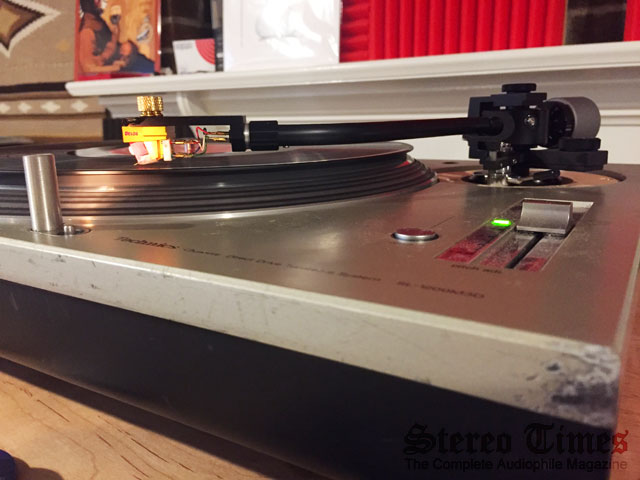



Be the first to comment on: Tweaks for Geeks 2019